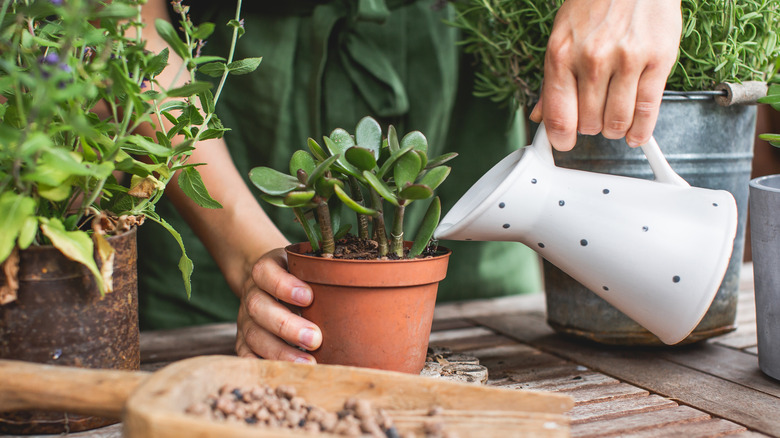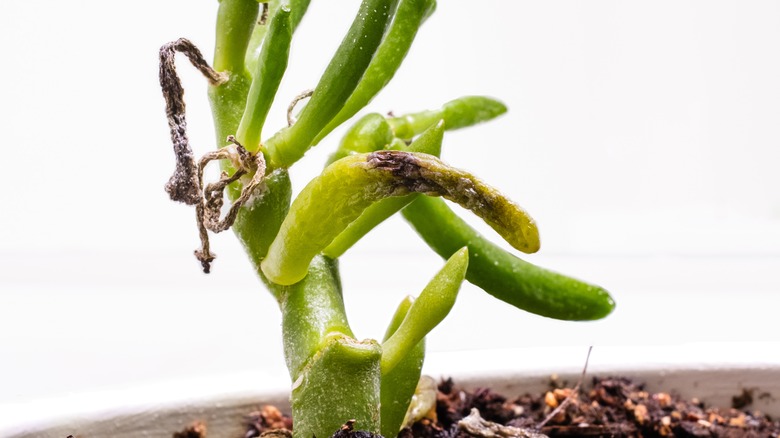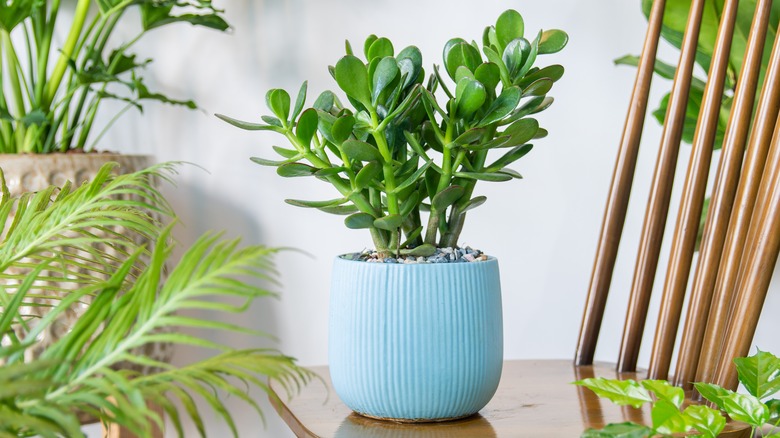The Surefire Sign You're Overwatering Your Jade Plant
With its plump, glossy leaves and sturdy branches, the jade plant is a popular and relatively low-maintenance houseplant. Consequently, its easy-to-care-for nature is often what makes it a popular choice for first-time plant owners. When healthy and thriving, jade plants have thick, green leaves. However, even these resilient succulents can encounter problems and one of the most common issues is overwatering. The biggest sign that your jade plant may be getting overwatered is when its normally beautiful leaves encounter worrisome changes.
Jade plants are native to South Africa and naturally thrive in dry, hot climates. One of the reasons they can endure such scorching environments is that these drought-resistant plants store water in their thick leaves. This allows them to go for long periods between drinks. Unfortunately, this natural adaptation can cause them to get too much water since plant owners might assume they need more water than they do.
How jade leaves look when overwatered
To successfully care for a jade plant, you must be careful not to overwater. If your Jade plant's leaves look off, that is a sign that something is just not right. Yellowing is an early sign of overwatering. The leaves may start to turn color at the edges or develop splotches in various areas. Leaves may also droop when yellow, which can quickly advance to becoming brown and droopy. Also, healthy jade leaves are firm and plump, so if they become soft and mushy, that can be an indicator of overwatering.
After looking at your plant's leaves, consider their stems, too. If the stems become soft and mushy, it's a sign of root rot, a serious condition caused by overwatering where the roots become mushy and die due to lack of oxygen. It can also be caused by fungi or bacteria. Soil that is soaked or waterlogged quickly leads to rapid root rot. This hinders the plant's ability to absorb water and essential nutrients. Your jade plant can't access water without healthy roots and becomes dehydrated, exhibiting signs like wilting leaves and dry, brittle stems.
How to properly water your jade plant
Jade plants thrive on moderately moist soil during their active growth period in spring and summer, which allows for thorough watering and complete drainage. However, their needs shift in fall and winter. As temperatures cool and days shorten, they enter a slower growth phase, requiring less water. Reduce both frequency and amount of watering, but never allow the plant to dry out completely. Aim for the top inch of soil to dry completely before each watering.
The best way to help your jade plant thrive is to pay careful attention to watering. Water deeply but infrequently, and allow the soil to dry completely between waterings. This could be once every week or two, depending on the size of your plant, pot material, and climate. Always use a pot with drainage holes to allow excess water to drain away, which prevents the roots from sitting in water. Between waterings, if the soil stays wet for long periods, it's likely not draining properly and getting overwatered so the most important thing to do is to stop watering immediately. Use a pot with drainage holes and a potting mix specifically formulated for succulents.


